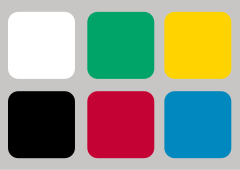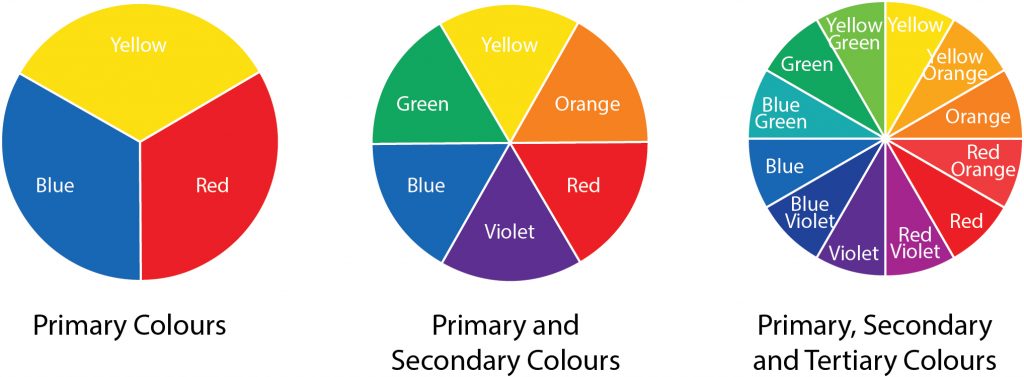Delta has an interesting article about the elemental damage types in OD&D and their associated colors.
OD&D ostentatively only had four damage types accessible to players: fire, cold, lightning and physical (weapons). Poison was just save or die. Monsters had more: green dragons did chlorine gas damage instead of poison (essentially acid), black dragons acid damage. And even players also could deal "air" damage through summoned air elementals, or "earth" damage through summoned earth elementals. Later in Greyhawk players got acid damage with Melf's Acid Arrow. Magic Missile from Greyhawk originally was untyped.
I find it amusing that OD&D found space for a table of +/- 1 modifiers to hit and damage against dragons by damage type, which may tell us a bit more about what opposes what, but which seems an odd choice given the modifiers are so small. (Aside: I also find the subdual rules mystifying -- why would anyone ever not opt for subdual? You very likely end the fight quicker than if you have to kill the dragon by removing all of his hp, plus you get your own personal dragon in the deal, too. There seems to be no downside for subdual?)
Ancient or medieval wrong models of how the world is composed had four to five substances or qualities. Aristotle had hot, cold, wet and dry that create the four elements we typically use, hot/dry = fire, hot/wet = air, cold/dry= earth and cold/wet=water. These conveniently also can be grouped into oppsing pairs and connected up with the elemental damage types:
Fire - Fire
Water - Cold
Earth - Acid
Air - Lightning
Chinese philosphy had five: Fire Water, Wood, Metal, Earth. Air is missing, and as this is not the western model D&D used, there is no easy damage mapping.
In 5e, bludgeoning attacks no matter what caused them are just physical bludgeoning damage. Magic Missile was redefined to "force" damage. Nowadays there is a much larger list of standard damage types in the game. If you take resistances and immunities into account, anything can be a damage type. Some devils can only be hit by magic or cold iron? Now cold iron is a type. A fey is immune to wooden weapons? Now wood is a type. Even without such shenanigans, the list of types now is quite long. For many of them, it would be difficult to assign an "element" type for the kinds of elements that have been thought of as building blocks in ancient systems.
- Physical (Slashing/Piercing/Bludgeoning)
- Silver (Slashing/Piercing/Bludgeoning)
- Magical (Slashing/Piercing/Bludgeoning)
- Poison - Wood
- Fire - Fire
- Lightning - Metal
- Cold - Water
- Acid - Earth
- Thunder - Air
- Psychic - Soul
- Necrotic - Undead
- Radiant - Holy
- Force - Magic
Humans can only think about five to seven things at the same time. Better five than seven. So any list that long is not accessible to a nice mental model any more.
Magic Colorbook
Magic: the Gathering used a brilliant classification scheme, by arranging five classes in a circle, and giving each a "color" of Magic. By giving primacy to the color, each color could have a portfolio that went wider than just an elemental type:
Red - Fire, Earth, Chaos, Emotion - typical creatures goblins, giants, dragons
Green - Wood, Growth, Nature, Animals - typical creatures elves, wurms, hydra
White - Order, Healing, Altruism, Good - typcial creaturs humans, pegasi, angels
Blue - Air, Water, Thought, Time - tyical creatures merfolk, djinni, sphinxes
Black - Death, Undead, Egotism, Evil - typcial creatures zombies, vampires, demons
Garfield brilliantly packed all the standard elements into just two of the colors, so there was a lot of room for other colors to comprehensively capture classes of magic. By having just five in a circle, he had a structure where each color had to allied and two enemy colors.
I think this is a wonderful classification, more inspiring than the "Schools of Magic" in D&D, which have no useful structure among themselves.
Energy Colorbook
For mapping energy types to colors, there can be no right system, as all of this is based on unscientific intuition and association. That said, here are some options:
Dragon Gary Delta Chroma/Google
Element Damage #1 #2 #3 #4 #5
Fire Fire red red red red red
Water Cold blue white dark blue green blue
Air Lightning white blue light blue white yellow
Earth Acid black black green black green
Wood Poison green green
Scheme #1 opposing fire/water get a chromatic color pair, the opposing air/earth the achromatic black and white. Blue is intuitively associated with water, while "no color" white is intuitively associated with "no color" air. Of course, both air and water are really transparent. These colors do not fully fit dragon colors. Blue dragons breathe lightning, not white ones, and white ones breathe cold, not blue ones.
Scheme #2 fixes this and uses the color of the dragon that breathes the element. This swaps white and blue from scheme #1. Think of white ice as a form of water to justify the color over blue, and blue sky for the color of air and lightning. I think this is the most "D&D" color scheme, and is what I would use. It has the added bonus that you can add wood, plant or nature as a "fifth element", and associate poison and green dragons with it, which is not possible in schemes #3-5. (It would not work as nicely in 1e, where they breathed yellow-greenish chlorine gas). Of course that leaves us with 3 chromatic colors and two non-colored ones.
Scheme #3 is from Gary, inspired by the lighter blue skye and darker blue ocean, and is all chromatic, no black or white, but I think it is crap. Two shades of the same color? C'mon.
Scheme #4 is from Delta and uses green for the deep watery ocean, but green dragons do not breathe cold, so that does not fix the dragon energy type issue; you could replace air with blue now that blue is freed up, but that has the imbalance that we then have 3 chromatic colors and black.
Scheme #5, I'll call it the Google scheme, only has chromatic colors. I think if you stick to the elements for color, and forget about the dragon colors, this is the most natural one. Yellow is the color of lightning in childrens paintings (although in reality it is white) and thus fits to air/lightning.
Color Wheels
In color schemes out of the context of fantasy, the Natural Color System identifies Red, Green, Blue, Yellow, and Black, White as the six psychologically primary colors. So the four Google colors plus black and white. Which actually matches the OD&D dragon colors, if you take yellow for the golden dragon.
In classical color circles, the primary color triad is red, blue, yellow, with the secondary colors between them green, orange, violet, and another six tertiary colors between those six. These choices are arbitrary convention of course, you could pick any three equidistant spots on a color circe as your basis.
What about other damage types? Logical color mapping quickly breaks down, as there are too many types. You can see a possible mapping in the colored list of the energy types, above.



No comments:
Post a Comment